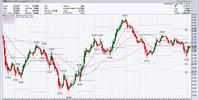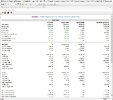- Joined
- 28 December 2013
- Posts
- 6,392
- Reactions
- 24,319

Trading breakouts
Breakouts require momentum to keep the trend going, but a lack of buying or selling pressure might cause the price to fall back into its prior range. Trend traders should be aware of these dangers and utilise risk management to limit possible losses.
While trend trading can be profitable, it is vital to remember that due to the inherent noise in financial markets, not all buy signals will be effective. Prices change constantly owing to a variety of reasons such as news events, economic data releases, and market mood, which might result in false signals.
The level of market volatility can also influence the success rate of trend trading signals. High volatility can cause sharp price changes in both directions, making it difficult to predict the trend's direction. For trend traders, timing is key since entering the market too early or too late might cause the signal to fail. As a result, traders should employ a combination of technical indicators to determine the best time to enter and exit the market.
To summarise, successful trend traders are aware of the dangers associated with trading and employ technical analysis, risk management, and expertise to increase their success rate over time. Traders can improve their chances of success and decrease potential losses by being aware of the dangers involved.
Skate.












